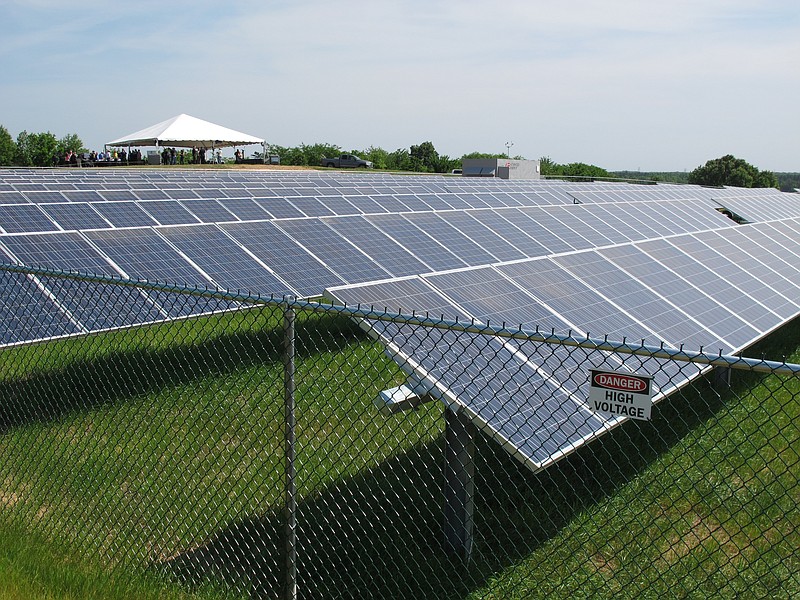The beginning of a congressional term is a time for flights of fancy. It's an occasion when legislation that will never pass in the middle of a session seems possible. It's a time when even the most outlandish ideas seem within grasp.
Such is the case with the Green New Deal, a proposal pushed by a number of members of Congress on the far left, including 29-year-old U.S. Rep. Alexandria Ocasio-Cortez, D-New York, who went on "60 Minutes" recently to tout it.
The plan would, among other things, "cut military spending by at least half" (putting some 1.4 million people out of work), eliminate nuclear power, natural gas and coal as energy sources (88 percent of the country's current supply) in 11 years (putting some 5.8 million more people out of work), and make the federal government the "employer of last resort."
To help pay for it, Ocasio-Cortez said on "60 Minutes," the government would impose a 70 percent income tax on the wealthiest Americans.
"[O]nce you get to the tippie tops," she said, "on your $10 millionth, sometimes you [would] see tax rates as high as 60 percent or 70 percent. That doesn't mean all $10 million are taxed at an extremely high rate. But it means that as you climb up this ladder, you should be contributing more."
The gaffe-prone Ocasio-Cortez already had shown she was out of her league on the campaign trail, misstating what the original New Deal was all about.
"What we had was an existential threat in the context of a war," she said. "We had a direct existential threat with another nation; this time it was Nazi Germany and the Axis, who explicitly made the United States as an enemy.
"We chose to mobilize our entire economy and industrialized our entire economy, and we put hundreds of thousands, if not millions, of people to work in defending our shores and defending this country," Ocasio-Cortez said. "We have to do the same thing in order to get us to 100 percent renewable energy, and that's just the truth of it."
War was, in fact, not on the horizon when Franklin D. Roosevelt took office in 1933 and launched his New Deal. His idea was to get Americans back to work after the Great Depression, and his raft of alphabet agencies - some of which are controversial still today - helped head the country that way.
After the Japanese attacked Pearl Harbor in 1941 and the U.S. entered World War II, the country's economy was, as Ocasio-Cortez said, "mobilized" and "industrialized."
War, in fact, did what FDR's New Deal was unable to accomplish.
But never let facts get in the way of a good campaign speech.
Back to the Green New Deal, though. On the surface, it's a massive program of investments in clean-energy jobs and infrastructure. But its aim is beyond simply the energy sector, which it wants to decarbonize, and on to the full economy, which it aims to make more just.
"It's going to require a lot of rapid change that we don't even conceive as possible right now," Ocasio-Cortez said on "60 Minutes." "What is the problem with trying to push our technological capacities to the furthest extent possible?"
For the sake of discussion, let's explore the energy part of the Green New Deal. What is to replace 88 percent of the country's energy in 11 years? One suggestion says that such an array will include 30.9 percent onshore wind, 19.1 percent offshore wind, 30.7 percent utility-scale photovoltaics (solar), 7.2 percent rooftop photovoltaics, 7.3 percent concentrated solar power with storage, 1.25 percent geothermal power, .37 percent wave power, .14 percent tidal power and 3.01 hydroelectric power.
What will happen to the 5.8 million people put out of work (as compared to 8.8 million total during the Great Recession)? The plan offers a vague promise to "provide resources to workers displaced from the fossil fuel industry."
And let's glance at that "employer of last resort" status of the federal government, which the plan estimates would cost only 1-2 percent ($194 billion to $388 billion) of the country's gross domestic product. In comparison, with the country already running close to trillion-dollar deficits in good times, the country annually generates $225 billion in corporate taxes.
So, not even every penny of corporate taxes the country takes in would pay for the jobs, which the plan says would be in sustainable energy and energy efficiency retrofitting, mass transit and "complete streets" that promote safe bike and pedestrian traffic, regional food systems based on sustainable organic agriculture, clean manufacturing, infrastructure and public services (education, youth programs, child care, senior care, etc.).
Did we mention there would be no cars (unless, conceivably, they are electric)? Did we say the energy industry effectively would have to be nationalized?
We say all this knowing for at least two years none of this could become reality. A Republican Senate and a President Donald Trump stand in the way of such nutty thinking.
But in two years, who knows? If many people thought they'd lost their country during the two terms of Barack Obama, imagine the kind of governing against the will of the people the Green New Deal would take.
Forewarned is forearmed, though.
